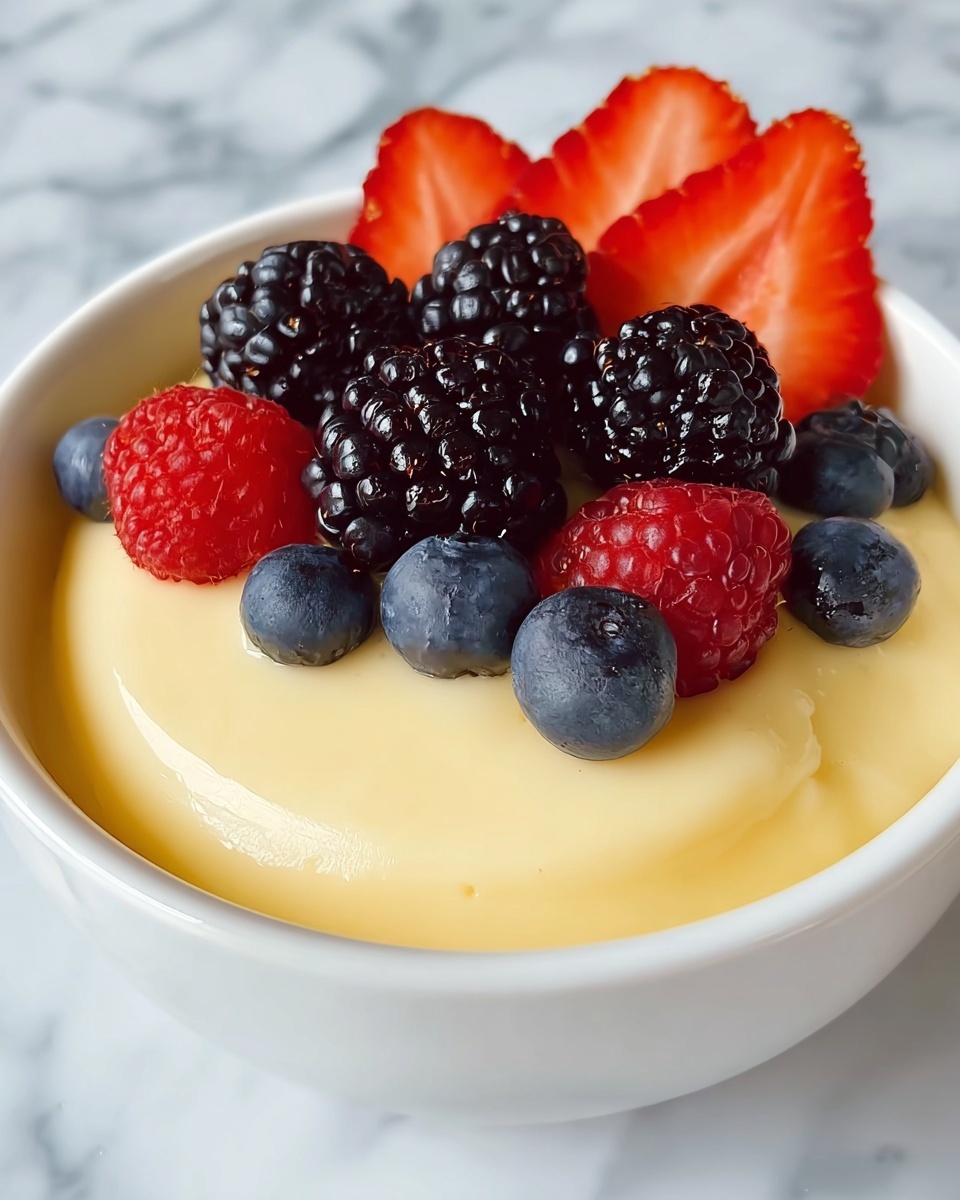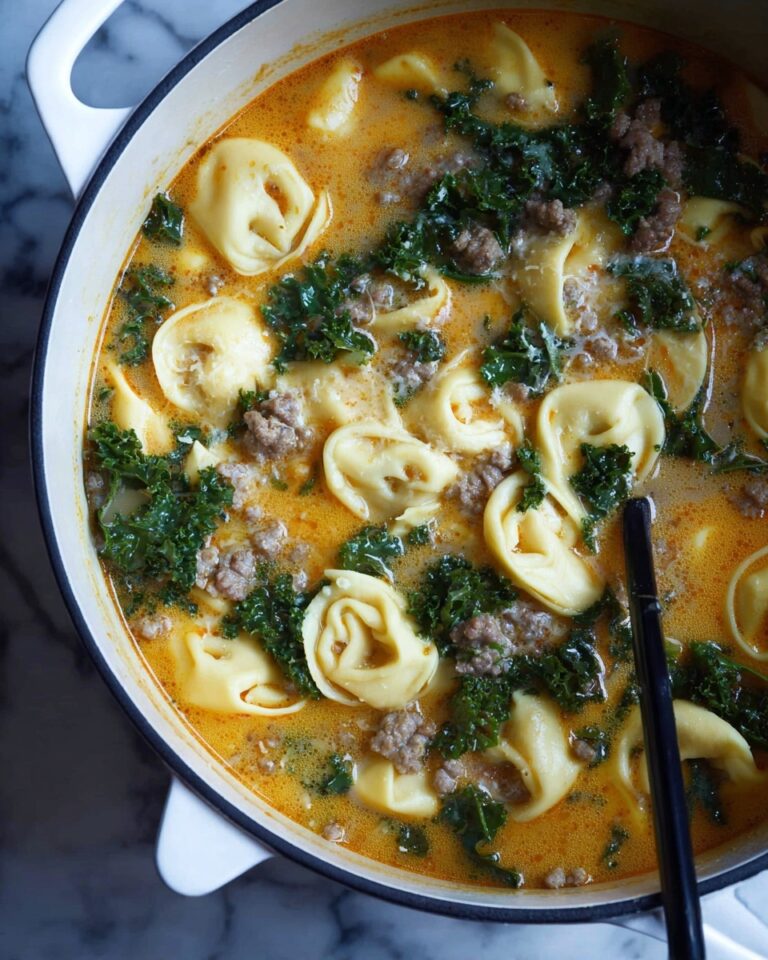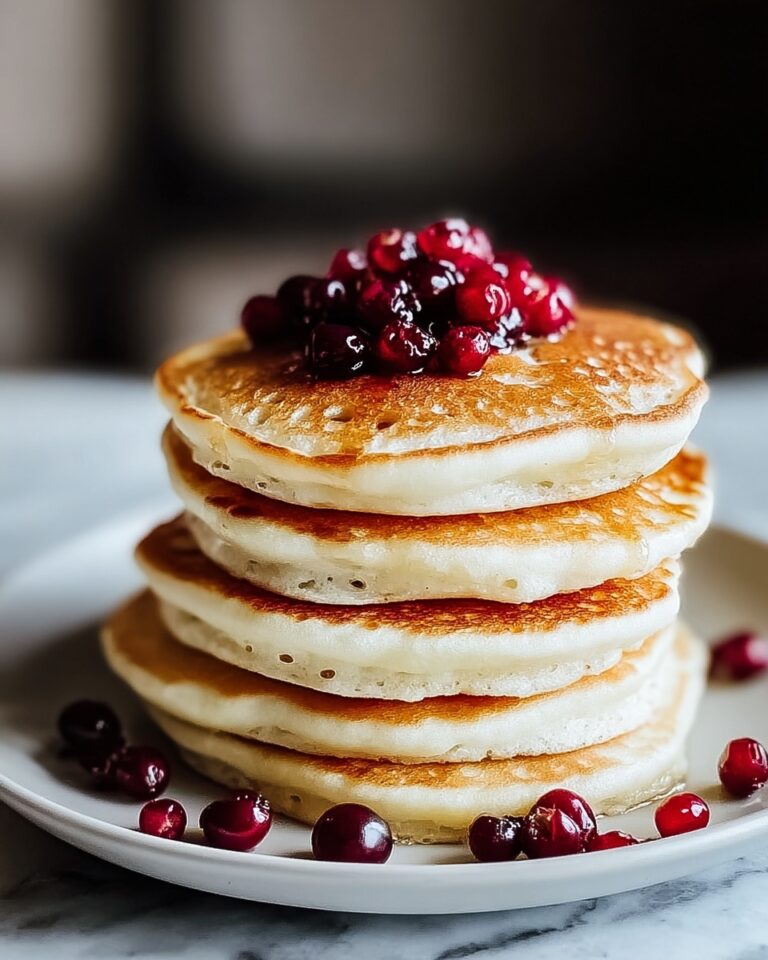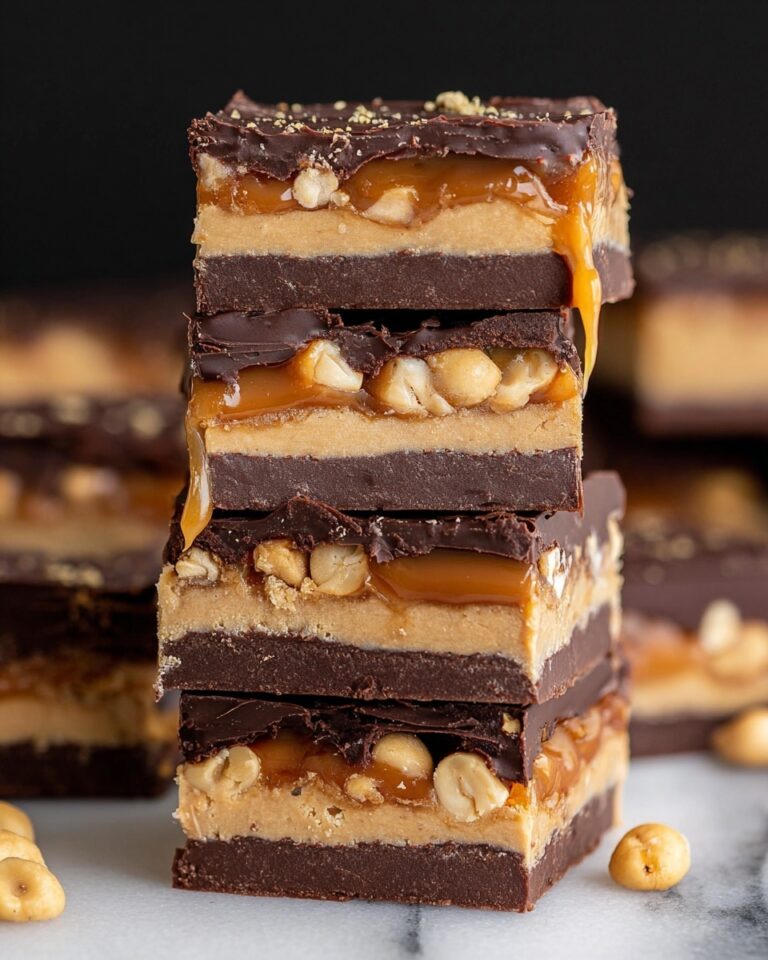“`html
There is nothing quite as comforting and delicious as a perfectly silky custard to soothe your soul and tickle your taste buds. This Homemade Custard Recipe is one of my absolute favorites to whip up because it feels both nostalgic and special, all at once. With just a handful of simple ingredients transforming into a luxuriously creamy delight, this custard strikes the perfect balance between smooth texture and rich flavor that can truly elevate any dessert moment.
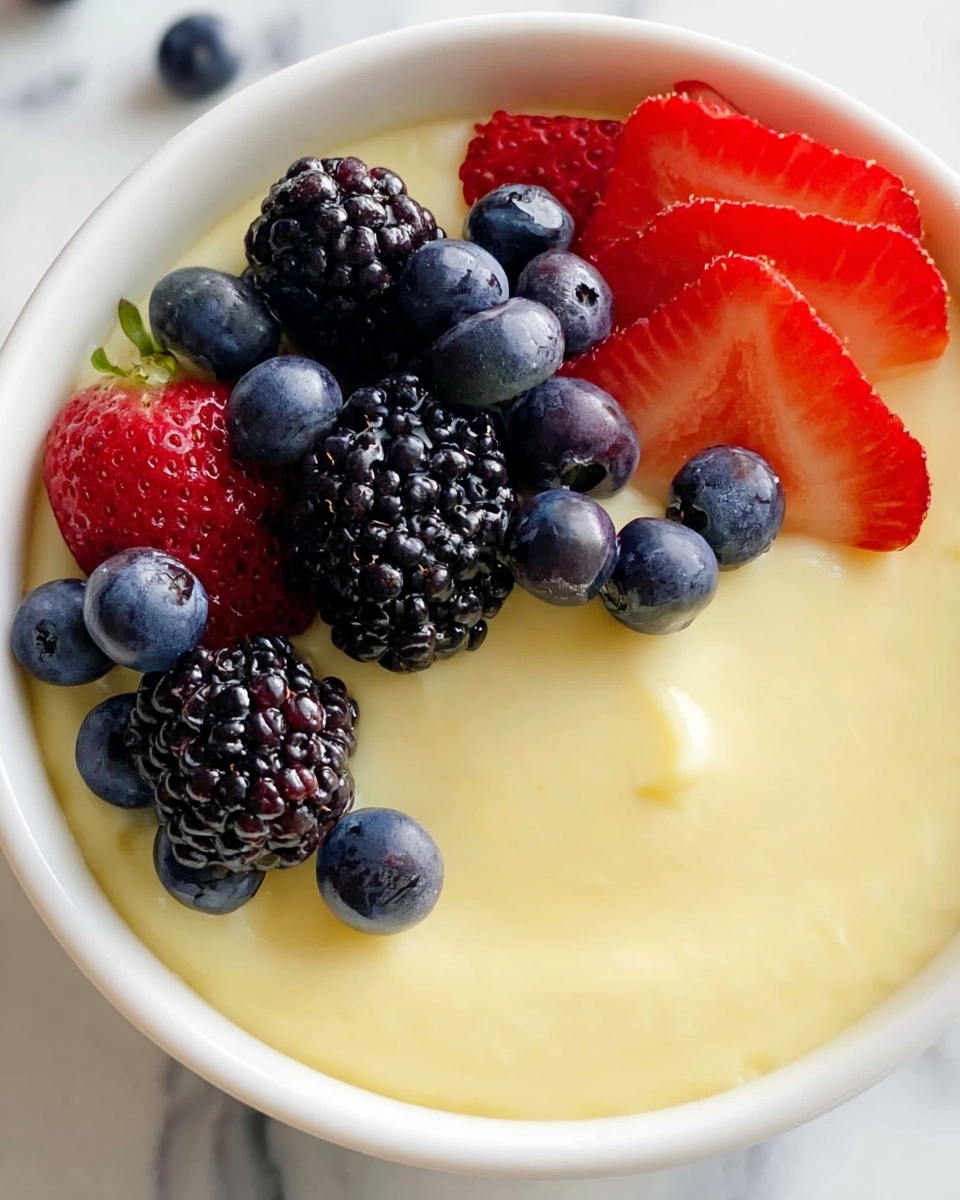
Ingredients You’ll Need
Every great recipe starts with essentials that lend themselves to magic, and this Homemade Custard Recipe is no different. Each ingredient plays an essential role in creating that creamy, dreamy custard texture and familiar warm flavor.
- 4 large egg yolks: Provide richness and help thicken the custard with their natural proteins.
- 1 2/3 cups whole milk: Brings creaminess and balances the custard with just the right amount of fat.
- 1/2 cup sugar, divided: Sweetens the custard perfectly while ensuring a smooth consistency.
- 3 tbsp cornstarch: Acts as a thickening agent for that luscious, velvety body and prevents curdling.
- 2 tsp vanilla extract: Infuses the custard with warm, fragrant notes that marry wonderfully with the creamy base.
- 2 tbsp unsalted soft butter: Adds a subtle richness and shines with a glossy finish.
How to Make Homemade Custard Recipe
Step 1: Warm the Milk and Sugar
Begin by pouring the whole milk and half of the sugar into a large pot. Heat it over medium heat until it reaches a gentle boil. Once boiling, reduce the heat to keep the milk at a low simmer. This slowly dissolves the sugar and prepares the milk to become that silky custard base.
Step 2: Prepare the Egg Mixture
While the milk heats, whisk the egg yolks in a bowl until smooth and pale. In another bowl, combine the remaining sugar with the cornstarch for even distribution. Then add the whisked egg yolks into that mix and blend thoroughly. It’s important to do this step just as the milk approaches boiling so the egg mixture is ready to be tempered without delay.
Step 3: Temper the Eggs
Take about one cup of the warm milk and carefully whisk it into the egg-sugar-cornstarch mixture. This tempering process is key in preventing the eggs from scrambling when added back to the pot. Whisk constantly and slowly—this gradual warming is what keeps your custard silky smooth.
Step 4: Cook Until Thickened
Pour the tempered egg mixture back into the pot with the remaining milk. Place it over medium-high heat and stir continuously with a wooden spoon or whisk. After 3 to 5 minutes, you’ll notice the custard thickening and coating the back of a spoon. At about 185°F, it’s perfectly set and ready for the next step. This thickening ensures a luscious final texture that holds beautifully in the fridge.
Step 5: Add Butter and Vanilla
Remove the custard from heat and stir in the unsalted butter and vanilla extract. The butter melts into the custard, enriching it and giving it that glossy sheen we all love. For the ultimate smoothness, strain the custard through a fine sieve to catch any little lumps and leave behind nothing but creamy perfection.
Step 6: Cool and Store
Transfer your custard to a bowl and press plastic wrap directly onto the surface to prevent a skin from forming. Let it cool to room temperature before choosing to serve it chilled or at room temperature, depending on your mood or recipe needs.
How to Serve Homemade Custard Recipe

Garnishes
Simple garnishes like fresh berries, a sprinkle of cinnamon, or a few mint leaves elevate this custard from delicious to divine. A dusting of toasted nuts adds a wonderful contrast of texture and nutty flavor that pairs beautifully with the creamy base.
Side Dishes
This Homemade Custard Recipe shines alongside classic desserts like warm apple pie, poached pears, or a slice of moist chocolate cake. It’s also an indulgent companion for fresh fruit salads, lending a creamy richness that ties everything together.
Creative Ways to Present
Think outside the bowl: serve the custard in elegant glasses layered with fruit compote or crumbly biscuits for a quick trifle. You can also pipe it onto individual tart shells or use it as a filling for crepes and pastries to impress your guests with both presentation and flavor.
Make Ahead and Storage
Storing Leftovers
Stored in an airtight container, this custard keeps well in the fridge for up to three days. Be sure to cover the surface tightly with plastic wrap to prevent a skin from forming and maintain that creamy texture.
Freezing
Though freezing custard can alter its texture slightly, it is possible. Use a freezer-safe container and thaw it gently overnight in the refrigerator. Whisk it gently before serving to help bring back some of the original smoothness.
Reheating
Reheat chilled custard slowly over low heat on the stove, stirring constantly to avoid scorching or curdling. Avoid microwaving directly as it can cause uneven heating and texture issues. Warm it just enough to bring it back to a creamy consistency without cooking it further.
FAQs
Can I use milk alternatives in this Homemade Custard Recipe?
Yes, you can substitute whole milk with alternatives like almond or oat milk, but it may slightly change the custard’s richness and texture. Full-fat milk provides the best creamy consistency.
What can I do if my custard curdles?
Curdling typically happens if the heat is too high or the eggs are added too quickly. To fix it, temper the eggs slowly next time and cook over gentle heat, stirring constantly. If curdling happens, straining can help smooth out the texture.
Is cornstarch necessary in this recipe?
Cornstarch acts as a thickener to give the custard its signature silky and stable texture. Without it, the custard might cook unevenly or become too runny.
How can I tell when the custard is properly cooked?
The custard is done when it thickens and coats the back of a spoon, reaching around 185°F. It should leave a clear line when you run your finger through it.
Can I use this custard as a base for other desserts?
Absolutely! This Homemade Custard Recipe is incredibly versatile and can be used as a base for pies, tarts, trifles, or even layered desserts. You can also add flavors like chocolate or citrus zest for variety.
Final Thoughts
Making this Homemade Custard Recipe is a truly rewarding experience that brings both comfort and joy with every spoonful. Whether you’re a custard newbie or a seasoned dessert lover, this recipe promises a creamy, smooth delight that’s easy to prepare and endlessly adaptable. I can’t recommend enough that you give it a try soon and discover how this simple custard can become your new kitchen favorite.
“`
Print
Homemade Custard Recipe
- Prep Time: 10 minutes
- Cook Time: 15 minutes
- Total Time: 25 minutes
- Yield: 4 to 4.4 servings
- Category: Dessert
- Method: Stovetop
- Cuisine: Western
Description
This homemade custard recipe delivers a smooth, creamy dessert made from scratch using simple ingredients. Perfect for serving on its own or as a base for other desserts, this custard is gently cooked on the stovetop to achieve a perfectly thickened texture with a rich vanilla flavor.
Ingredients
Custard Ingredients
- 4 large egg yolks
- 1 2/3 cups whole milk
- 1/2 cup sugar, divided
- 3 tbsp cornstarch (can use cornflour)
- 2 tsp vanilla extract
- 2 tbsp unsalted soft butter
Instructions
- Heat the Milk: In a large pot, pour the whole milk and half of the sugar. Bring the mixture to a boil over medium heat. Once boiling, reduce the heat to maintain a low simmer.
- Prepare Egg Mixture: While the milk heats, whisk the egg yolks in a bowl. In a separate bowl, combine the remaining sugar and cornstarch. Add the whisked egg yolks to the sugar-cornstarch mixture and whisk until smooth, ensuring this step is timed with the milk nearing boiling temperature.
- Temper the Eggs: Gradually add 1 cup of the warm milk into the egg mixture, whisking constantly to prevent curdling. Then, pour this tempered egg mixture back into the pot containing the remaining milk.
- Cook the Custard: Place the pot over medium-high heat and stir constantly with a wooden spoon or whisk. Cook for 3-5 minutes or until the custard thickens and reaches 185°F, achieving a consistency that coats the back of a spoon, which ensures proper setting when chilled.
- Finish the Custard: Remove the pot from the heat. Stir in the unsalted butter and vanilla extract until the butter melts and the custard is silky. For an ultra-smooth texture, strain through a sieve to remove lumps.
- Cool and Serve: Transfer the custard into a bowl and cover the surface directly with plastic wrap to prevent skin formation. Let it cool to room temperature and serve either chilled or at room temperature, as preferred.
Notes
- Tempering the eggs with warm milk prevents curdling and ensures a smooth custard.
- Constant stirring while cooking prevents the custard from sticking or burning on the bottom of the pot.
- Covering the custard surface with plastic wrap prevents a skin from forming during cooling.
- For a richer flavor, whole milk is recommended, but you can substitute with cream or a milk alternative if desired.
- Use a thermometer to monitor the temperature for best results.

